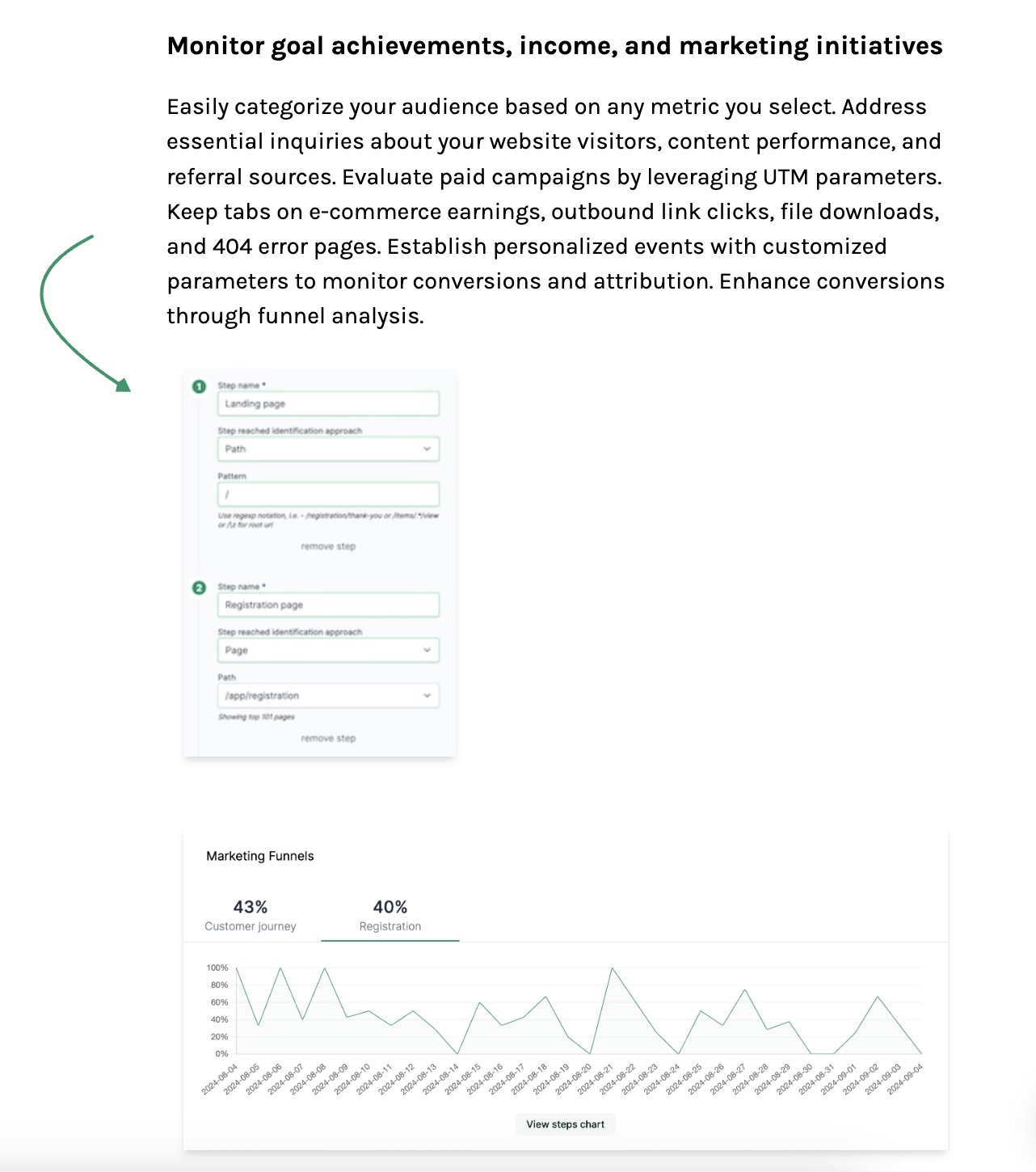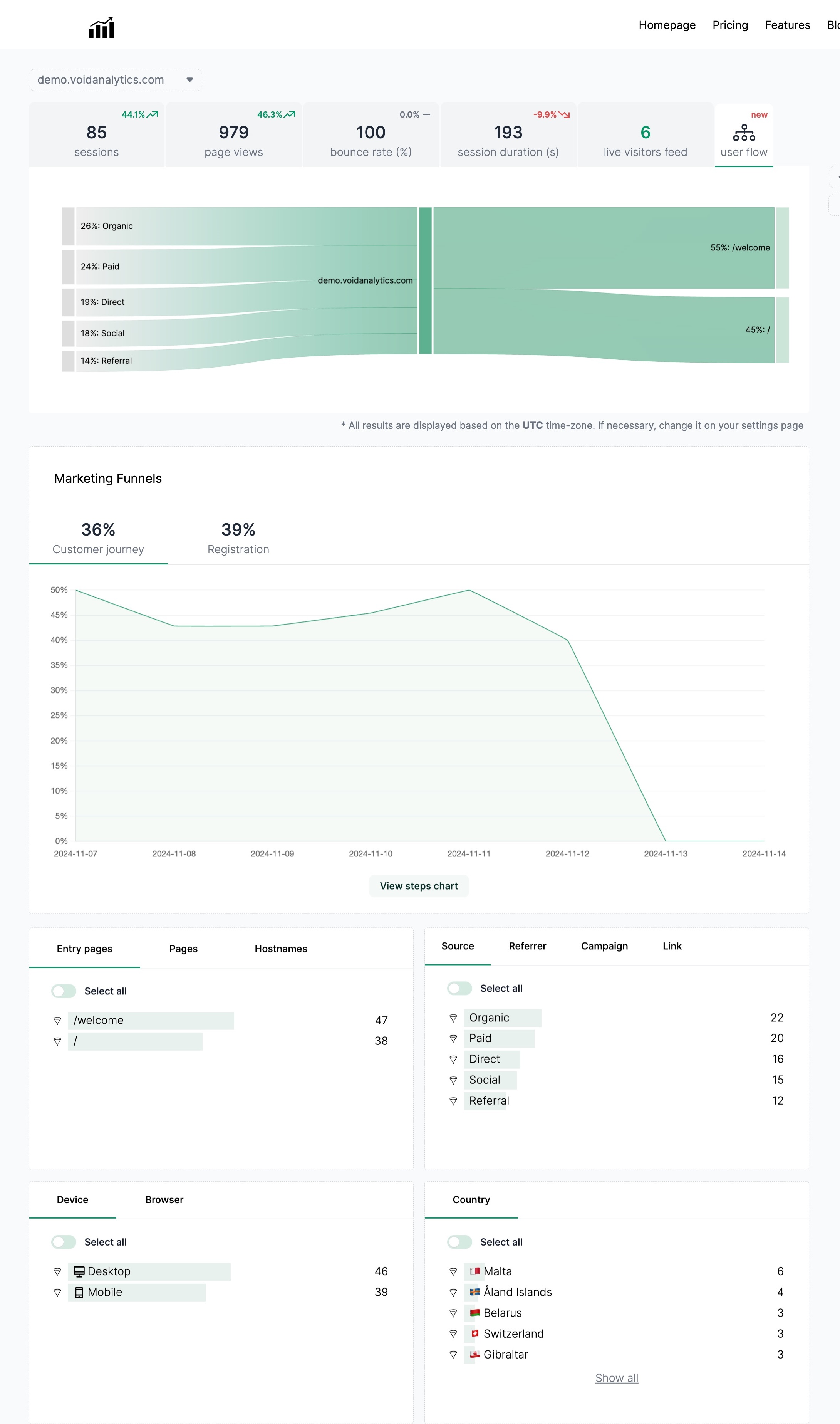Migrating from Google Analytics 4 to Void Analytics: A Seamless Transition
Published on 2024-01-31
In the ever-evolving landscape of web analytics, businesses often find themselves seeking alternative solutions that better align with their unique needs. One such intriguing alternative gaining attention is Void Analytics. In this blog post, we'll explore the process of migrating from Google Analytics 4 (GA4) to Void Analytics and the benefits that come with this transition.
The Need for Change
Google Analytics 4 has been a staple for businesses tracking user interactions and website performance. However, as data privacy concerns and the need for more customizable analytics solutions have grown, many organizations are exploring alternatives. Void Analytics has emerged as a viable choice, offering a fresh perspective on data analysis and user-centric insights.
Key Steps in the Migration Process
Migrating from GA4 to Void Analytics can be a smooth and efficient process when approached with a well-defined plan. Here are the key steps to ensure a successful transition:
1. Data Assessment:
Begin by conducting a thorough assessment of your existing GA4 data. Identify the key metrics and reports that are crucial for your business objectives.
2. Account Setup with Void Analytics:
Create an account with Void Analytics and set up your tracking parameters. Void Analytics provides an intuitive interface and comprehensive documentation to streamline this process.
3. Data Migration:
Export relevant data from GA4 and import it into your Void Analytics account. Ensure that data integrity is maintained during the transfer.
4. Configuration and Customization:
Customize Void Analytics to align with your specific reporting needs. Take advantage of the platform's flexibility to create tailored reports and dashboards.
5. Testing:
Conduct thorough testing to verify that data is accurately captured and reports are generated as expected. This step is crucial for identifying any potential issues before fully committing to the new analytics platform.
6. Training and Familiarization:
Provide training sessions for your team to familiarize them with the features and functionalities of Void Analytics. Understanding the new platform will empower your team to leverage its capabilities effectively.
Benefits of Migrating to Void Analytics
Privacy Emphasis: Void Analytics prioritizes user privacy, ensuring that sensitive data remains secure and in the hands of the website owner.
Customization Options: Enjoy a high level of customization with Void Analytics, allowing you to tailor reports and dashboards to meet your specific business requirements.
User-Centric Insights: Void Analytics offers a user-centric approach to data analysis, providing deeper insights into user behavior and preferences.
Streamlined Data Visualization: The platform's streamlined data visualization makes it easier to interpret complex data sets, enabling more informed decision-making.
Conclusion
Migrating from Google Analytics 4 to Void Analytics represents a strategic move for businesses seeking a more personalized and privacy-focused analytics solution. By following the outlined steps and embracing the benefits of Void Analytics, you can ensure a seamless transition that enhances your ability to derive valuable insights from your website data.
Consider making the switch today and experience the difference that Void Analytics can make in elevating your analytics game.

